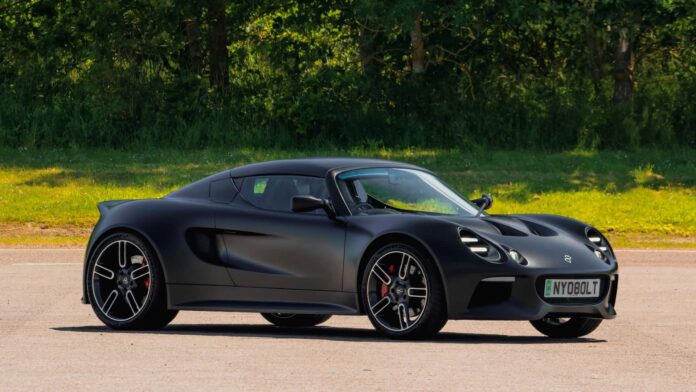
Four minutes and 37 seconds. That’s how much time it took for Nyobolt’s working EV prototype to top up its batteries from 10% to 80% charge using a 350-kilowatt DC fast charger.
That’s roughly the same time it takes to fill up an internal combustion car’s empty gas tank—a large one, at least–making it pretty clear that EV tech is on the right track to dethrone ICE vehicles in the near future. However, there are some asterisks.
Fast-charging v2
Until a couple of years ago, when a carmaker touted the fast-charging capabilities of a new EV, it was perfectly normal to expect not more than 150 kW of power and a 30-minute wait for a 20% to 80% top-up. Things have moved in the right direction, though, with some new EVs capable of accepting 350 kW, significantly cutting down the wait times during charging sessions.
The secret sauce behind British-based Nyobolt’s impressive charging experiment is its proprietary battery cells, which use carbon and metal oxide anode materials and have a low-impedance design and integrated power electronics.
Nyobolt is not an automaker, but a battery technology startup. The Cambridge-headquartered company has been ramping up since its first $10 million fundraising round back in 2021, and it claims to be making big strides in fast charging. (The car itself here was made in collaboration with CALLUM, the engineering firm founded by Jaguar design legend Ian Callum.)
In the prototype EV showcased by the start-up, the battery modules’ temperature is kept in check with cold plates that run a water/glycol mix cooled by an AC compressor and condenser.
The result, Nyobolt says, is limited heat generation compared to conventional lithium-ion battery packs–140 degrees Fahrenheit during a fast charge or a “performance drive.” According to the company, the 2,755-pound prototype sustained a constant current of 500 amps during the first four minutes of the demonstrative real-world test.
Furthermore, the Cambridge start-up claims that its 24.5-amp-hour cells have successfully gone through over 4,000 full Depth of Discharge (DoD) cycles, which equate to over 600,000 miles in the case of the lightweight two-door Nyobolt EV prototype. The lab testing also concluded that the cells retained over 80% of their capacity after these fast-charging cycles, an impressive feat on its own.
With all this being said, however, some facts might make it difficult for these figures to be a part of a press release headline about a family EV anytime soon.
17 Photos
We already mentioned the weight of Nyobolt’s working EV prototype, but it’s hard to see how a battery-powered mid-size crossover could tip the scales at under 3,000 lbs, even with the latest and greatest in battery tech. The Tesla Model Y, the best-selling car in the world, weighs somewhere between 4,100 and 4,400 lbs because it has a big battery, space for five people and a bunch of safety features baked in from the get-go. Nyobolt’s two-seater, not so much.
Speaking about the battery size, the Model Y sports a beefy lithium-ion pack that can store anywhere from 60 to 81 kWh, depending on the version, enabling an EPA-rated range of up to 320 miles on a full charge. Meanwhile, the Nyobolt EV has a 35 kWh pack that can power the sports car for up to 155 miles on a full charge, according to the startup.
But while there is obviously more work to do, it wouldn’t be out of the ordinary to see a Nyobolt battery that’s double in capacity—70 kWh—and can fast-charge from 10% to 80% in less than 10 minutes, as long as the thermals are kept in check and the cells can draw high currents for a long time.
The battery startup said that several car companies are interested in its technology and that low-volume production could start as soon as next year with a ramp-up expected for 2025. As with any EV startup, all of these claims are worth a grain of salt until an actual product is on the road. But this one could be making some promising strides in getting EVs back on the road much more quickly.


